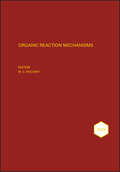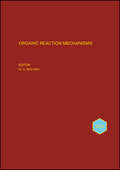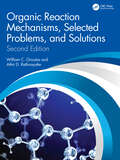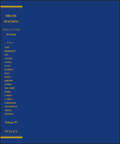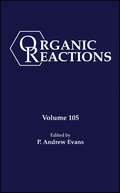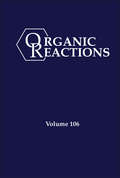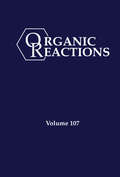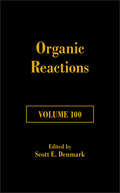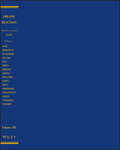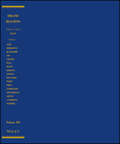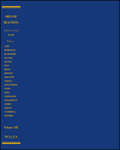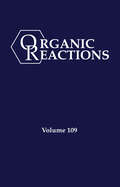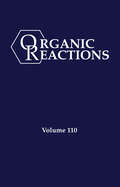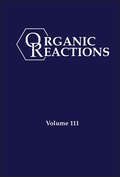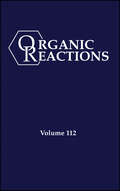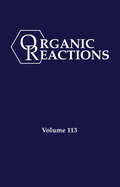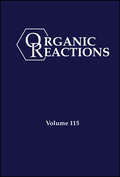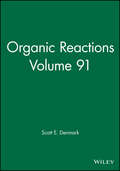- Table View
- List View
Organic Reaction Mechanisms 2019 (Amsterdam Anthologies)
by Mark G. MoloneyOrganic Reaction Mechanisms 2019, the 55th annual volume in this highly successful and unique series, surveys research on organic reaction mechanisms described in the available literature dated 2019. The following classes of organic reaction mechanisms are comprehensively reviewed: Reaction of Aldehydes and Ketones and their Derivatives Reactions of Carboxylic, Phosphoric, and Sulfonic Acids and their Derivatives Oxidation and Reduction Carbenes and Nitrenes Nucleophilic Aromatic Substitution Electrophilic Aromatic Substitution Carbocations Nucleophilic Aliphatic Substitution Carbanions and Electrophilic Aliphatic Substitution Elimination Reactions Polar Addition Reactions Cycloaddition Reactions Molecular Rearrangements Radicals An experienced team of authors compile these reviews every year, so that the reader can rely on a continuing quality of selection and presentation.
Organic Reaction Mechanisms 2020 (Organic Reaction Mechanisms)
by M. G. MoloneyOrganic Reaction Mechanisms 2020, the 56th annual volume in this highly successful and unique series, surveys research on organic reaction mechanisms described in the available literature dated 2020. The following classes of organic reaction mechanisms are comprehensively reviewed: Reaction of Aldehydes and Ketones and their Derivatives Reactions of Carboxylic, Phosphoric, and Sulfonic Acids and their Derivatives Oxidation and Reduction Nucleophilic Aromatic Substitution Electrophilic Aromatic Substitution Carbocations Nucleophilic Aliphatic Substitution Carbanions and Electrophilic Aliphatic Substitution Elimination Reactions Polar Addition Reactions Cycloaddition Reactions Molecular Rearrangements Transition Metal Coupling Radicals An experienced team of authors compile these reviews every year, so that the reader can rely on a continuing quality of selection and presentation.
Organic Reaction Mechanisms, Selected Problems, and Solutions: Second Edition
by William C. Groutas Athri D. RathnayakeThis fully updated new edition presents organic reaction mechanism questions, carefully selected from the primary chemical literature, to understand how reactants are transformed into products. The author explains step-by-step solutions to all problems with appropriate contextual comments explaining the rationale and reasoning underlying each step, and identifying the underlying principles involved in each question. In the process the reader gains a better understanding of the fundamental principles of organic chemistry and how to become proficient in using the Lewis acid/Lewis base concept to complete organic reactions without resorting to memorization. Features : The questions are graded in difficulty with Part A containing questions aimed at students taking the sophomore-level organic chemistry class, while part B contains questions of somewhat greater difficulty suitable for students taking an honors course in organic chemistry or a beginning graduate course. Detailed answers are provided to all questions so students can check their answers and important points are highlighted in each answer. Special emphasis has been placed on the selection of questions to ensure that each question illustrates one or more fundamental principles of organic chemistry. Interspersed throughout the book are minireviews that cover the material pertaining to a particular topic. The specific literature references corresponding to each question are included and students can look up those references for more contextual information. Includes a large number of carefully-selected mechanism questions and step-by-step solutions, including explanatory comments
Organic Reaction Mechansisms 2017: An annual survey covering the literature dated January to December 2017 (Organic Reaction Mechanisms Series)
by A. C. KnipeOrganic Reaction Mechanisms 2017, the 53rd annual volume in this highly successful and unique series, surveys research on organic reaction mechanisms described in the available literature dated 2017. The following classes of organic reaction mechanisms are comprehensively reviewed:• Reaction of Aldehydes and Ketones and their Derivatives • Reactions of Carboxylic, Phosphoric, and Sulfonic Acids and their Derivatives• Oxidation and Reduction • Carbenes and Nitrenes • Nucleophilic Aromatic Substitution• Electrophilic Aromatic Substitution• Carbocations• Nucleophilic Aliphatic Substitution• Carbanions and Electrophilic Aliphatic Substitution• Elimination Reactions• Polar Addition Reactions• Cycloaddition Reactions• Molecular RearrangementsAn experienced team of authors compile these reviews every year, so that the reader can rely on a continuing quality of selection and presentation.
Organic Reactions
by Scott E. DenmarkVolume 88 represents the tenth single-chapter-volume produced in our 73-year history. Such single-chapter volumes represent definitive treatises on extremely important chemical transformations. The success of the research efforts over the past 20 years forms the basis for the single chapter in this volume namely, Hydroamination of Alkenes by Alexander L. Reznichenko and Kai C. Hultzsch. The authors have compiled an enormous (and growing) literature and distilled it into an extraordinarily useful treatise on all aspects of the hydroamination process.
Organic Reactions
by Scott E. DenmarkThe latest volume in this series for organic chemists in industry presents critical discussions of widely used organic reactions or particular phases of a reaction. The material is treated from a preparative viewpoint, with emphasis on limitations, interfering influences, effects of structure and the selection of experimental techniques. The work includes tables that contain all possible examples of the reaction under consideration. Detailed procedures illustrate the significant modifications of each method.
Organic Reactions (Organic Reactions #97)
by Scott E. DenmarkThe 97th volume in this series for organic chemists in industry presents critical discussions of widely used organic reactions or particular phases of a reaction. The material is treated from a preparative viewpoint, with emphasis on limitations, interfering influences, effects of structure and the selection of experimental techniques. The work includes tables that contain all possible examples of the reaction under consideration. Detailed procedures illustrate the significant modifications of each method.
Organic Reactions (Organic Reactions #97)
by Scott E. DenmarkThe 96th volume in this series for organic chemists in industry presents critical discussions of widely used organic reactions or particular phases of a reaction. The material is treated from a preparative viewpoint, with emphasis on limitations, interfering influences, effects of structure and the selection of experimental techniques. The work includes tables that contain all possible examples of the reaction under consideration. Detailed procedures illustrate the significant modifications of each method.
Organic Reactions (Organic Reactions #81)
by P. Andrew EvansThe 104th volume in this series for organic chemists in academia and industry presents critical discussions of widely used organic reactions or particular phases of a reaction. The material is treated from a preparative viewpoint, with emphasis on limitations, interfering influences, effects of structure and the selection of experimental techniques. The work includes tables that contain all possible examples of the reaction under consideration. Detailed procedures illustrate the significant modifications of each method.
Organic Reactions (Organic Reactions #88)
by P. Andrew EvansThe 105th volume in this series for organic chemists in academia and industry presents critical discussions of widely used organic reactions or particular phases of a reaction. The material is treated from a preparative viewpoint, with emphasis on limitations, interfering influences, effects of structure and the selection of experimental techniques. The work includes tables that contain all possible examples of the reaction under consideration. Detailed procedures illustrate the significant modifications of each method.
Organic Reactions (Organic Reactions)
by P. Andrew EvansThe 106th volume in this series for organic chemists in academia and industry presents critical discussions of widely used organic reactions or particular phases of a reaction. The material is treated from a preparative viewpoint, with emphasis on limitations, interfering influences, effects of structure and the selection of experimental techniques. The work includes tables that contain all possible examples of the reaction under consideration. Detailed procedures illustrate the significant modifications of each method.
Organic Reactions (Organic Reactions)
by P. Andrew EvansORGANIC REACTIONS ENANTIOSELECTIVE HYDROFORMYLATIONToshiki Tazawa, Andreas Phanopoulos, and Kyoko Nozaki HAUSER–KRAUS, SAMMES, STAUNTON–WEINREB, AND TAMURA ANNULATIONSCharles B. de Koning, Kathy Hadje Georgiou, Joseph P. Michael, and Amanda L. Rousseau
Organic Reactions, Volume 100 (Organic Reactions #97)
by Scott E. DenmarkWritten by a "who is who" of leading organic chemists, this anniversary volume represent the Organic Reactions editors' choice of the most important, ground-breaking and versatile reactions in current organic synthesis. The 15 reaction types selected for this volume include reactions for carbon-carbon bond formation, cross-coupling reactions, hydro- and halofunctionalizations, among many others. In line with the successful recipe of the series, each chapter is focused on a single reaction, discussing its mechanism and stereochemistry, scope and limitations, applications to synthesis, comparison with other methods, and experimental procedures. Each chapter concludes with a tabular survey of selected key application examples, complete with reported reaction conditions and yields, to serve as a quick reference guide for synthesis planning.
Organic Reactions, Volume 101 (Organic Reactions #81)
by P. EvansThe 101st volume in this series for organic chemists in academia and industry presents critical discussions of widely used organic reactions or particular phases of a reaction. The material is treated from a preparative viewpoint, with emphasis on limitations, interfering influences, effects of structure and the selection of experimental techniques. The work includes tables that contain all possible examples of the reaction under consideration. Detailed procedures illustrate the significant modifications of each method.
Organic Reactions, Volume 102 (Organic Reactions #81)
by P. Andrew EvansThe 102nd volume in this series for organic chemists in academia and industry presents critical discussions of widely used organic reactions or particular phases of a reaction. The material is treated from a preparative viewpoint, with emphasis on limitations, interfering influences, effects of structure and the selection of experimental techniques. The work includes tables that contain all possible examples of the reaction under consideration. Detailed procedures illustrate the significant modifications of each method.
Organic Reactions, Volume 103 (Organic Reactions)
by P. Andrew EvansThe 103rd volume in this series for organic chemists in academia and industry presents critical discussions of widely used organic reactions or particular phases of a reaction. The material is treated from a preparative viewpoint, with emphasis on limitations, interfering influences, effects of structure and the selection of experimental techniques. The work includes tables that contain all possible examples of the reaction under consideration. Detailed procedures illustrate the significant modifications of each method. This volume is published in two parts, A and B.
Organic Reactions, Volume 109: Volume 104 (Organic Reactions)
by P. Andrew EvansThe 109th volume in this series for organic chemists in academia and industry presents critical discussions of widely used organic reactions or particular steps of a reaction. The material is treated from a preparative viewpoint, with emphasis on limitations, interfering influences, effects of structure and the selection of experimental techniques. The work includes tables that contain all possible examples of the reaction under consideration. Detailed procedures illustrate the significant modifications of each method.
Organic Reactions, Volume 110: Volume 107 (Organic Reactions)
by P. Andrew EvansA carefully curated review of the scientific literature on selected organic reactions, Volume 110 of the Organic Reactions series delivers insightful invited reviews of primary research material in the field of organic chemistry. The latest volume explores the practical and theoretical aspects of the reaction under discussion. The Organic Reactions series is a renowned, peer-reviewed reference in publication since 1942. It is one of the leading secondary- and tertiary-level sources in organic chemistry today.
Organic Reactions, Volume 111 (Organic Reactions)
by P. Andrew EvansThe 111th volume in this series for organic chemists in academia and industry presents critical discussions of widely used organic reactions or particular steps of a reaction. The material is treated from a preparative viewpoint, with emphasis on limitations, interfering influences, effects of structure and the selection of experimental techniques. The work includes tables that contain all possible examples of the reaction under consideration. Detailed procedures illustrate the significant modifications of each method. Volume contents: RING-OPENING REACTIONS OF EPOXIDES WITH TITANIUM(III) REAGENTS T. V. (Babu) RajanBabu, William A. Nugent, and Sandipan Halder REDUCTIVE CYCLIZATION OF 2-NITRO- AND β-NITROSTYRENES, 2-NITROBIPHENYLS, AND 1-NITRO-1,3-DIENES TO INDOLES, CARBAZOLES, AND PYRROLES Björn C. G. Söderberg and William F. Berkowitz
Organic Reactions, Volume 112, Parts A and B (Organic Reactions)
by P. Andrew EvansA carefully curated review of the scientific literature, Volume 112 of Organic Reactions commemorates the 50th anniversary of the Ugi reaction. It explores the practical and theoretical aspects of one of the most widely used reactions in organic chemistry, focusing on the main Ugi reaction as well as on its many variants. This volume is published in two parts, A and B. Launched in 1942, the Organic Reactions series today is a leading secondary- and tertiary-level source for organic chemists across the world.
Organic Reactions, Volume 113 (Organic Reactions)
by P. Andrew EvansA carefully curated review of the scientific literature, Volume 113 of Organic Reactions presents critical discussions of widely used organic reactions or particular steps of a reaction. The material is treated from a preparative viewpoint, with emphasis on limitations, interfering influences, effects of structure and the selection of experimental techniques. The work includes tables that contain all possible examples of the reaction under consideration. Detailed procedures illustrate the significant modifications of each method. Launched in 1942, the Organic Reactions series today is a leading secondary- and tertiary-level source for organic chemists across the world.
Organic Reactions, Volume 114 (Organic Reactions)
by P. Andrew EvansA carefully curated review of the scientific literature, Volume 114 of Organic Reactions presents critical discussions of widely used organic reactions or particular steps of a reaction. The material is treated from a preparative viewpoint, with emphasis on limitations, interfering influences, effects of structure and the selection of experimental techniques. The work includes tables that contain all possible examples of the reaction under consideration. Detailed procedures illustrate the significant modifications of each method. Launched in 1942, the Organic Reactions series today is a leading secondary- and tertiary-level source for organic chemists across the world.
Organic Reactions, Volume 115 (Organic Reactions)
by P. Andrew EvansA carefully curated review of the scientific literature, Volume 115 of Organic Reactions presents critical discussions of widely used organic reactions or particular steps of a reaction. The material is treated from a preparative viewpoint, with emphasis on limitations, interfering influences, effects of structure and the selection of experimental techniques. The work includes tables that contain all possible examples of the reaction under consideration. Detailed procedures illustrate the significant modifications of each method. Launched in 1942, the Organic Reactions series today is a leading secondary- and tertiary-level source for organic chemists across the world.
Organic Reactions, Volume 90 (Organic Reactions #97)
by Scott E. DenmarkThe latest volume in this series for organic chemists in industry presents critical discussions of widely used organic reactions or particular phases of a reaction. The material is treated from a preparative viewpoint, with emphasis on limitations, interfering influences, effects of structure and the selection of experimental techniques. The work includes tables that contain all possible examples of the reaction under consideration. Detailed procedures illustrate the significant modifications of each method.
Organic Reactions, Volume 91 (Organic Reactions #97)
by Scott E. DenmarkThe latest volume in this series for organic chemists in industry presents critical discussions of widely used organic reactions or particular phases of a reaction. The material is treated from a preparative viewpoint, with emphasis on limitations, interfering influences, effects of structure and the selection of experimental techniques. The work includes tables that contain all possible examples of the reaction under consideration. Detailed procedures illustrate the significant modifications of each method.
